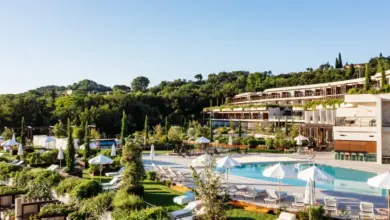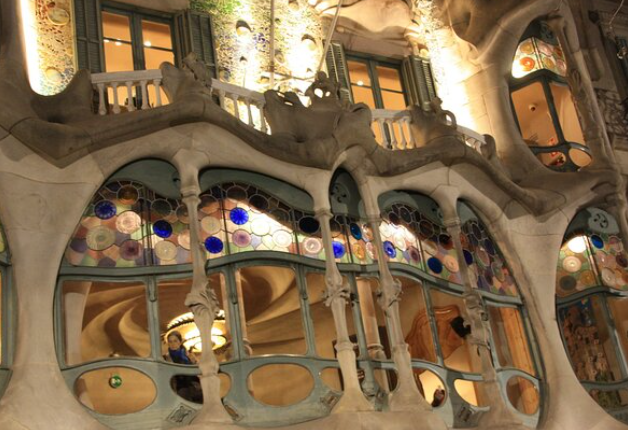
About Casa Batlló
In 1860, the same year that an ambitious urban design for the city called design Cerdà was enacted, the Paseo de Gracia became the core artery of Barcelona and started to house the palaces of the city’s most famous families. The road served as a thoroughfare for pedestrians and carriages in the 1800s and, beginning in the 1900s, became a major roadway for automobiles.
When electricity had not yet reached Barcelona in 1877, the building was first constructed by Emilio Sala Cortés, an architecture professor working under Gaudí. In 1903, it was purchased by the illustrious industrialist D. Josep Batlló y Casanovas, who was known for his control over multiple textile enterprises in Barcelona.
Antoni Gaudí was given complete creative license by D. Josep Batlló, who commissioned him to implement a reform that, in principle, necessitated the building’s demolition. Nevertheless, the House was saved from demolition and underwent substantial renovations from 1904 to 1906, all because of Gaudí’s boldness. The architect opened the door for a real masterwork on the inside by rearranging the internal dividing walls, expanding the courtyard, and changing the front. The work is noteworthy not just for its aesthetic merit but also for its extraordinary practicality, which is more in keeping with the present than with the past. Actually, there are academics who think this building was an early example of the modernist style that emerged in the late 20th century.
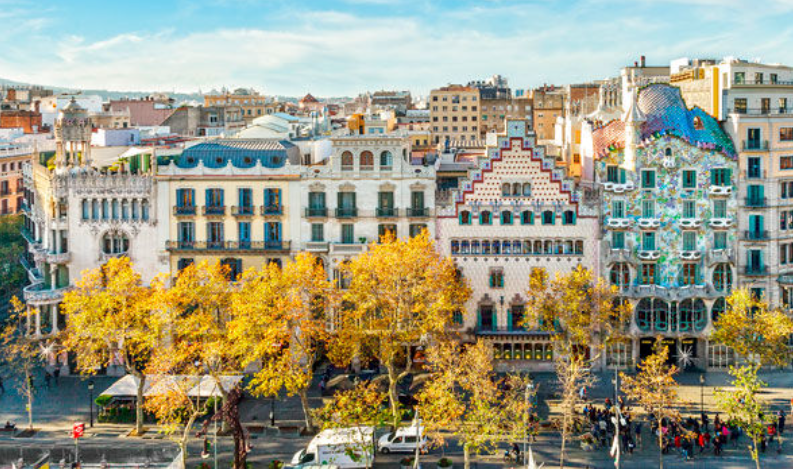
Single façade
A declaration of happiness, a canvas of marine inspiration, and a dream world that conjures both nature and fantasy are all characteristics of Casa Batlló.
The beholder is flooded with sentiments that are set against a backdrop of continual interaction with light and color, and the facade of the building serves as the doorway to this symbolic cosmos. Its breathtaking beauty is certain to leave an impression on anyone who comes into contact with it, prompting people to stop and think about it at any time of the day (or night).
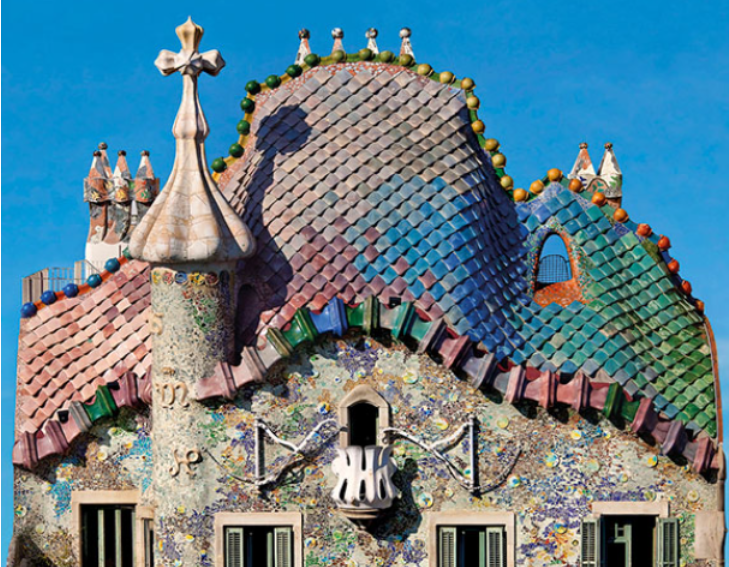
STREET ESCAPE: GAUDÍ AND THE HIDDEN TREASURE
Gaudí and the Hidden Treasure: Street Escape is a very interesting outdoor activity that can be compared to a treasure hunt and enriched by Barcelona’s famous architecture. It is an exclusive tour, which takes place through the streets of the city and includes activities such as solving riddles and riddles inspired by the genius of Antoni Gaudí. There are always not-so-obvious things that turn history into something more interesting while visiting some of Gaudí’s most iconic works, such as Casa Batlló or La Sagrada Família. “Street Escape: “Gaudí and the Hidden Treasure” is an adventurous game that helps players discover Barcelona’s architectural gems, and is therefore suitable for large and small groups as well as individuals. It is a unique opportunity for anyone, tourist or resident, to see the city from a different perspective.
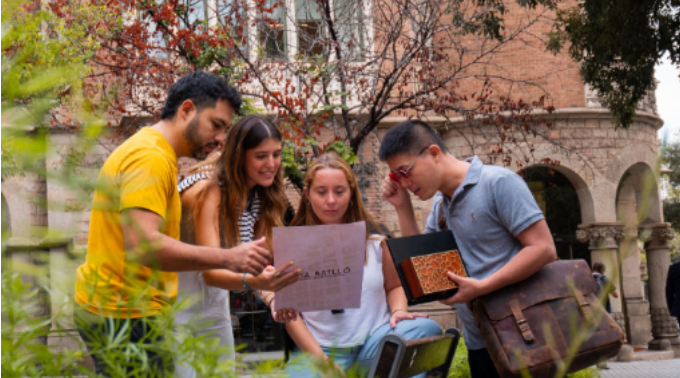
An interior full of art
Casa Batlló boasts an extraordinarily designed interior. Antonio Gaudí worked with wrought iron, wood, stained glass, ceramic tiles, stone decorations and so on, flanked by the greatest craftsmen of his time.
The surprises multiply as you walk through the palace. Letters with modernist elements identify the doors of the floors. The courtyard tiles take on an extraordinary aquatic quality when the glass of each landing distorts them. With their ergonomic design, knobs and railings, they are easy to use. Every aspect of the work – the design, colors, shapes, space and lighting – has been meticulously considered and crafted by the artist.
While there’s no shortage of excitement, what’s more surprising is that it’s constantly being outpaced by practicality. From the foyer to the terrace, every space in the building combines form and function in an elegant and practical way.
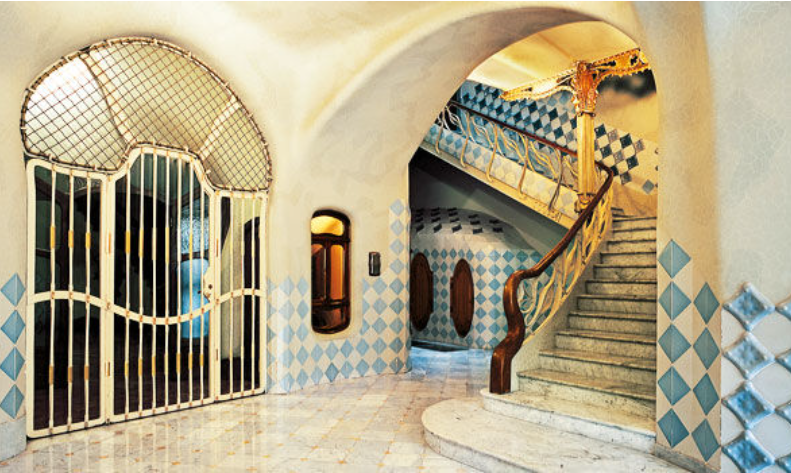
Lightwell
The lightwell is a fundamental part of the house, as it distributes the air and light that enter through the main skylight. Gaudí extended the patio (there was one and he included a second) to ensure that natural light would reach all of the rooms of the house. He also decorated it with tiles of different blue tones (with more intense colour in the upper part and lighter tiles at the bottom) in order to ensure the uniform distribution of the light.
Following this same logic, the upper windows are smaller and they become bigger as they descend (allowing more light to enter). The lower windows have wooden slits which can be opened or closed for ventilation control.
Gaudí installed the lift in the centre of the lightwell. Its beautiful original wooden lift car is still in use today.
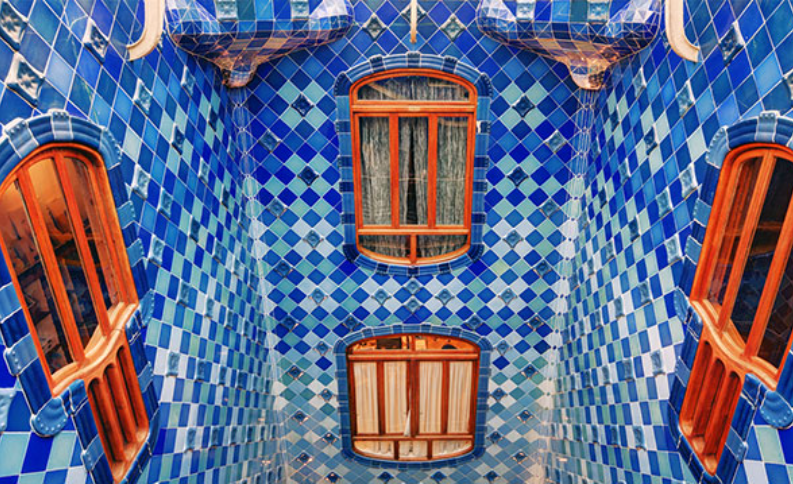
Indoor garden
The private dining room of the Batlló family, which is situated in the middle of the Noble Floor, provides access to a private rear courtyard. This courtyard is a small oasis in the middle of the city, and it was constructed specifically for the Batlló family to enjoy in the afternoon. The paving, as well as the tile and glass-coated flower pots that serve as the primary decorative features in this area, are the most notable aspects of this place.
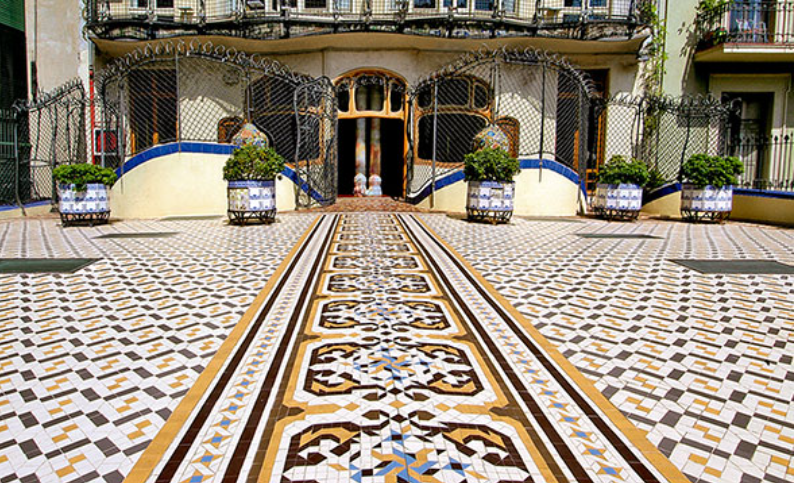
Conclusion
Casa Batlló, a testament to Antoni Gaudí’s inventiveness, offers visitors the chance to observe architectural marvels. Every part of the structure showcases Gaudí’s distinctive approach to fusing art, architecture, and design with nature and innovation, making it an essential stop for any tourist in Barcelona. Whether a tourist is interested in architecture or not, or just wants to experience the local culture, a visit to Casa Batlló will provide an opportunity to learn about the work of a world-renowned architect and will undoubtedly leave an impact.





